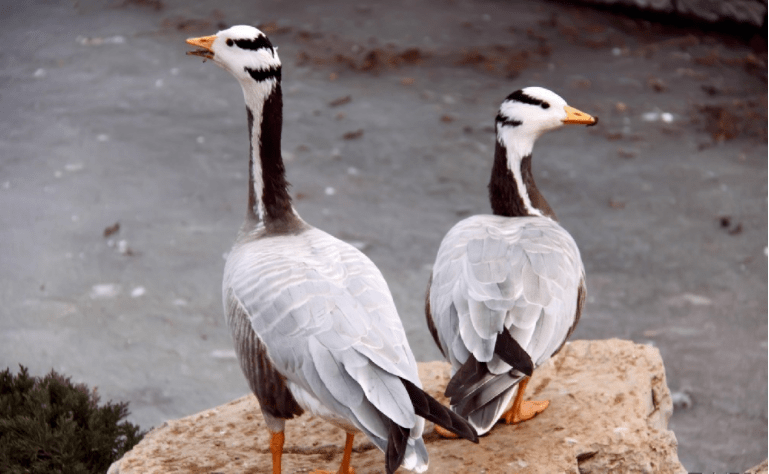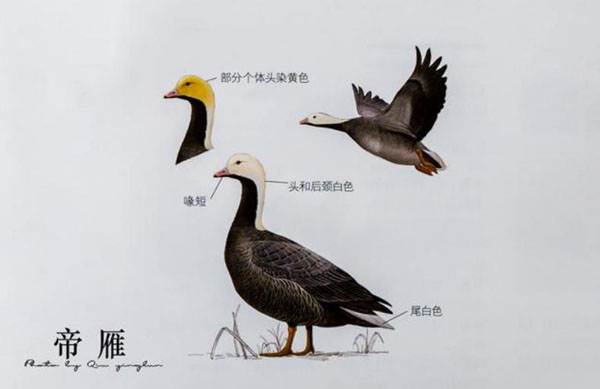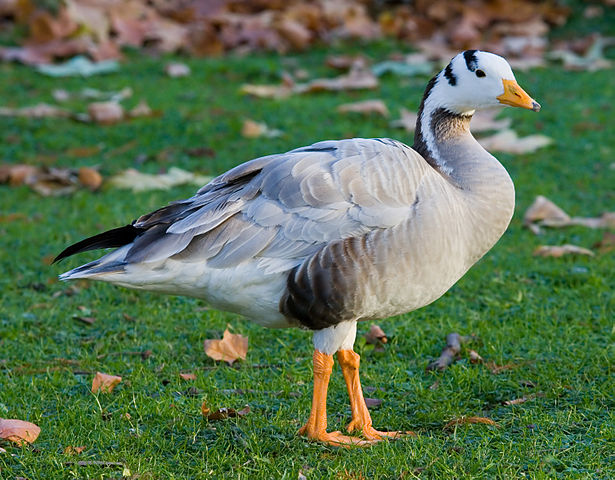Anser indicus
IUCN
LCBasic Information
Scientific classification
- name:Anser indicus
- Scientific Name:White-headed goose, Black-headed goose,Bar-headed Goose
- Outline:Waterfowl
- Family:Anseriformes Anatidae Anser
Vital signs
- length:62-85 cm
- Weight:2-3kg
- lifetime:8 years
Feature
The highest flying bird in the world.
Distribution and Habitat
Distributed in Afghanistan, Bangladesh, Bhutan, China, India, Kazakhstan, Kyrgyzstan, Mongolia, Myanmar, Nepal, Pakistan, Tajikistan, Thailand, Uzbekistan, Vietnam, Canada, Spain.
Migrant bird: Guam, Japan, Lao People's Democratic Republic, Federated States of Micronesia, Palau.
China distributes in swamps and lakes in Qinghai and Tibet, China, and migrates to central and southern China in winter. There are a large number of them.
They breed in plateau lakes, especially saltwater lakes, and also choose freshwater lakes and open and swampy areas. They winter in lowland lakes, rivers and swamps. Plateau birds, living in plateau wetland lakes and also found in cultivated land, form small groups during migration and breeding, and can be seen breeding in mixed groups with brown-headed gulls, and also in mixed groups with black-necked cranes, red-crested poultry and other birds. They often keep a certain distance from people. In the suburbs of Lhasa, this species often gathers
Appearance
The sexes of the bar-headed goose are similar, but the female is slightly smaller. The adult bird has a dirty white head with brownish-yellow feather edges, especially darker in front of the eyes, forehead and cheeks. There are two black horizontal stripes on the back of the head. The first one is slightly behind the head, longer, and extends to the two eyes in a horseshoe shape; the second one is located on the occipital and is shorter. The white head extends downward, forming a white vertical stripe on each side of the neck; the back of the neck is dark brown. The back is light gray-brown, with brown feather tips, forming scaly spots; the wing coverts are gray, the outer primary flight feathers are gray, the tips are black, the inner primary flight feathers and secondary flight feathers are black, the waist and upper tail coverts are white, and the tail is gray-brown with white terminal spots. The chin and throat are dirty white with brownish-yellow, the front neck is dark brown, the
Details
Bar-headed geese - they are the highest flying birds in the world. At an altitude of more than 9,000 meters, it only takes about eight hours to fly over the Himalayas.

Incredibly, if the wind is favorable, they can complete a one-way flight of more than 1,600 kilometers in a few days. Its average flight altitude is nearly 10,000 meters. During migration, bar-headed geese will fly over the Himalayas, and their flight altitude will even exceed Mount Everest!

Bar-headed geese are a common summer migratory bird in the Qinghai-Tibet Plateau of China. The population is large, especially in the Qinghai Lake Bird Island, where bar-headed geese are concentrated and the population is also large. The species has a wide distribution range and is not close to the critical value of vulnerable and endangered species survival (distribution area or fluctuation range is less than 20,000 square kilometers, habitat quality, population size, and distribution area fragmentation). The population trend is stable, so it is evaluated as a species with no survival crisis.
Listed in the "List of Terrestrial Wildlife with Important Economic and Scientific Research Value under State Protection" (item 43) issued by the State Forestry Administration of China on August 1, 2000.

The bar-headed goose is a national first-class protected animal. It is on the red list of endangered species. Because its profit is very high, the population is constantly decreasing. Therefore, there is a special protection area in Qinghai, my country, for the purpose of better protecting this type of animal.
In October 2020, the National Forestry and Grassland Administration issued the "Notice on Standardizing the Classification and Management Scope of Prohibited Wildlife", prohibiting the breeding of bar-headed geese for the purpose of eating. Except for special circumstances such as retaining a moderate amount of seed sources, farmers are guided to stop breeding.








